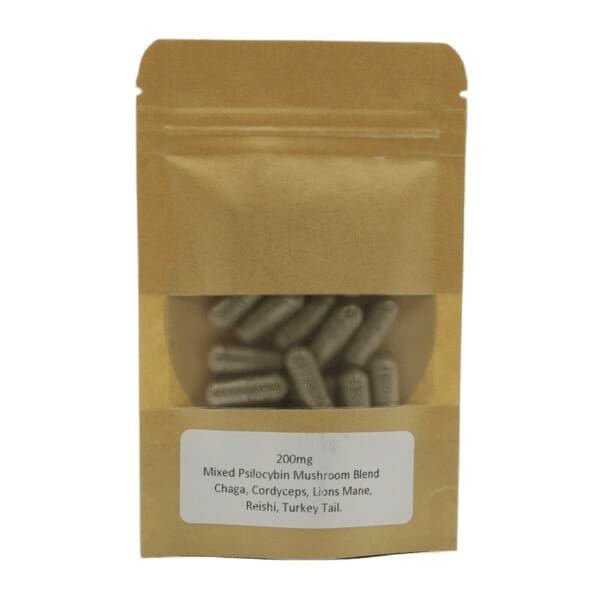Microdosing Canada: A Beginner’s Guide to Psychedelic Therapy

Psychedelic therapy is a growing field of alternative medicine that has gained attention in recent years. With Canada legalizing psilocybin for medical purposes and the rise of microdosing, it’s necessary to understand what this therapy is and how it can benefit you. Let us explore its benefits of psychedelic therapy, and how to safely and effectively microdose.
What is Microdosing?
Microdosing Canada involves taking small, sub-perceptual amounts of a psychedelic substance like psilocybin or LSD. The goal is to experience the benefits of the substance without the intense and often overwhelming effects of a full dose. Many people who microdose claim to experience increased creativity, productivity, focus, and an overall improvement in mood.
Types of Psychedelics Used in Microdosing
LSD
LSD, or lysergic acid diethylamide, is a powerful psychedelic substance that has been used for both recreational and therapeutic purposes. Doses typically range from 10 to 20 micrograms, which is sub-perceptual and doesn’t induce hallucinations.
Psilocybin
Psilocybin is the active ingredient in “magic mushrooms” and has been used for centuries for its psychedelic properties. Microdosing with psilocybin involves taking doses of 0.1 to 0.5 grams, which is also sub-perceptual.
DMT
DMT, or dimethyltryptamine, is a naturally occurring psychedelic substance found in plants and animals. In microdosing, doses are typically between 5 and 10 milligrams, which is again sub-perceptual.
Science of Microdosing
Research has shown that microdosing with psychedelics may have a positive effect on various mental health conditions.
A study published in the Journal of Psychopharmacology found that microdosing with LSD was associated with decreased symptoms of anxiety and depression in individuals with mood disorders. Another study published in the Journal of Psychopharmacology found that microdosing with psilocybin was associated with increased creativity and open-mindedness.
One potential reason for its therapeutic benefits is that these substances may have a modulating effect on brain activity. Specifically, psychedelics appear to increase the activity of certain brain networks while decreasing the activity of others. This shift in brain activity may allow for new perspectives and insights to arise, leading to the positive effects seen in microdosing studies.
This process is still a relatively new area of research, and more studies are needed to fully understand its potential benefits and risks. Always approach it with caution and to only use psychedelics under the guidance of a qualified medical professional.
Neuroplasticity
It has been shown to increase neuroplasticity, which is the brain’s ability to form new neural connections and pathways. This can lead to improved learning, memory, and cognitive flexibility.
Dopamine
Psychedelics have been shown to increase dopamine release in the brain, which can lead to improved mood, motivation, and reward processing.
Applications of Microdosing
Psychedelic Therapy
Psychedelic therapy involves the use of psychedelic substances to treat various mental health conditions, including depression, anxiety, PTSD, and addiction. It has been used as a form of psychedelic therapy, with some users reporting significant improvements in their mental health and emotional well-being. While more research is needed in this area, preliminary studies suggest that microdosing may be a promising therapy for certain mental health conditions.
Cognitive Enhancement
Microdosing has been used to improve cognitive function, including memory, creativity, and problem-solving. Some users report improved focus and concentration, while others claim that it has helped them to think more creatively and come up with new ideas.
Spiritual and Religious Experiences
Microdosing has been used in various spiritual and religious practices. For example, some people use microdosing to enhance meditation or other spiritual practices. Others use it as a tool for personal growth and self-discovery.
While the use of psychedelic substances for spiritual and religious purposes is controversial, many people believe that it helps them to connect with their spirituality and inner selves.
Athletic Performance
Some athletes have reported using microdosing to improve their athletic performance. Athletes report an improvement to their focus and concentration, reduce anxiety and stress, and enhance overall physical performance.
Mood and Emotional Well-being
Many people use microdosing to improve their mood and overall emotional well-being. It has been reported to help reduce anxiety and depression, improve mood, and enhance feelings of well-being and happiness.
PTSD
Post-Traumatic Stress Disorder (PTSD) is a debilitating mental health condition that affects millions of people around the world. It is a mental health disorder that develops after a person experiences or witnesses a traumatic event, such as military combat, sexual assault, natural disasters, or accidents. PTSD can lead to flashbacks, nightmares, severe anxiety, depression, and other negative emotions.
It has been suggested as a potential treatment option for individuals with PTSD. Studies have shown that microdosing can help to reduce anxiety, depression, and other negative emotions that are often associated with PTSD. It has also been shown to help improve mood, increase creativity, and enhance cognitive functioning, all of which can help individuals with PTSD cope with their symptoms.
One of the reasons why microdosing is effective for individuals with PTSD is because it helps to reduce activity in the Default Mode Network (DMN) in the brain. The DMN is a network of brain regions that are active when an individual is not focused on the outside world, and is instead engaged in self-referential thinking.
Research has shown that individuals with PTSD have increased activity in the DMN, which is thought to contribute to their symptoms. By reducing activity in the DMN, microdosing can help to alleviate symptoms of PTSD.
How to Microdose Safely and Effectively in Canada

Before beginning any kind of regimen, it’s important to do your research and consult with a healthcare professional. Here are some tips for safely and effectively microdosing in Canada:
Find a Trusted Source
Make sure to buy only from a trusted source. There are many unregulated sources out there, so be sure to do your research and only purchase from reputable sources.
Start Low and Go Slow
The goal is to take a sub-perceptual amount of the substance, meaning that you shouldn’t feel any intense effects. Start with a very low dose and gradually increase it until you find the optimal dose for you.
Take Breaks
Take breaks to avoid building up a tolerance to the substance. A typical microdosing regimen involves taking the substance every three days, with two days off in between.
Be Mindful of Set and Setting
Set and setting refer to the mindset and environment. Build or create a safe and comfortable environment and approach microdosing with a positive mindset.
Microdosing Canada with Zoomies
Microdosing is a growing trend in psychedelic therapy that has the potential to improve mental health and overall well-being. Approach this therapy with caution and only after consulting with a healthcare professional. By following safe and effective practices, you can experience the benefits of this therapy and contribute to the growing body of research surrounding psychedelic therapy in Canada.
Frequently Asked Questions
Is microdosing safe?
It is safe when done properly and under the guidance of a healthcare professional. It’s important to start with a very low dose and gradually increase it, and to only purchase from reputable sources.
While it’s not illegal to microdose, it’s always recommended to consult with a healthcare professional before beginning any kind of psychedelic therapy.
Can microdosing be used to treat mental health conditions?
There is evidence to suggest that it can be effective in treating a range of mental health conditions, but more research is needed to fully understand its potential.
Related articles:


